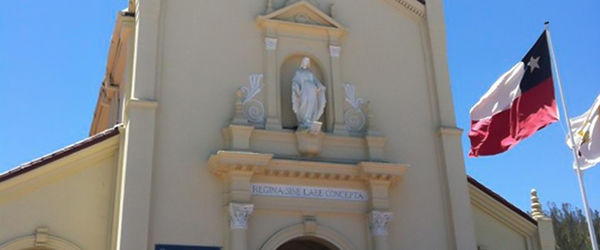When I was a child, my grandmother developed an Advent practice that was utterly simple and yet unforgettable.
In Havana, where I grew up, Christmas had been outlawed by the Communist government (it was officially reinstated in 1998 after Pope John Paul II visited Cuba). In such an atmosphere of coercion and danger the Christmas holiday was stripped bare down to its very roots. Without Christmas lights and store windows, without any possible public celebrations, without food or parties, the religious nature of the holiday shone through with a very clear light. The only light.
My grandmother, creatively enterprising, took advantage of such a teachable moment. (Perhaps we are at a similar moment as our country struggles through difficult economic times to live more simply and be less of a consumer society.) One day after school my abuela took a large piece of paper and carefully drew a simple empty manger on it. She placed this manger prominently on the dining room wall. Then she took more paper and cut it into thin long strips.
"The Christ child," she explained to us, "needs soft straw for his manger, and you children will give him that straw by doing good deeds.”
Each time we were kind, each time we were charitable, dutiful, loving, she would give us one precious strip of paper which we would then glue onto the drawing of the manger. The hope was that by Christmas Eve, Nochebuena, the manger, would be full of the straw we brought, made comfortable and warm by our good works.
I was very young, so I don't remember if we filled the manger, but I hope we did.
I want to invite you to a variation on this practice as the last candle: to have the straw of the manger be made from looking back on your year and noticing all of the gifts which may have gone unnoticed before. These are gifts not in boxes or festooned with ribbons, but much more real, more tangible, more lasting, because they make the world a better place.
The Christ child," my abuela explained to us, "needs soft straw for his manger, and you children will give him that straw by doing good deeds.
So let me add my own, a piece of straw shining like gold --- the gift of my students. College professors have a privileged vantage point from which to view the future; we live in the midst of young people who share their lives with us, their fears, their questions, and often also their joys. My bit of straw is for you to have a glimpse of these young people, because as the new year begins, I want you to know we are in very good hands.
We have youngsters dreaming dreams, building faith, loving the world and each other. I am grateful for them and I want you to know them.
Accompanying this column (below left) is one of a set of three poems written by Jacob Aplaca for my theology course. Young Jacob is a junior at Loyola Marymount University, an English major from Hawaii who has made his home with us during his college years. Jacob's poems follow Jesus from his Incarnation, this first poem, through his Passion and Resurrection, the last two poems. (Look for Jacob's other poems in The Tidings this coming Lent and Easter.)
In this trio of poems, Jacob helps us see that Jesus coming to be with us is part of an entire cosmic story, a story for the universe and for all of history.
Here is the first. Put it in your manger, and as Jacob says, Sing.
Feliz Navidad.
Cecilia Gonzalez-Andrieu, Ph.D, teaches theology at Loyola Marymount University. Her new book, “Bridge to Wonder: Art as a Gospel of Beauty,” will be available from Baylor University Press in April.
{gallery width=100 height=100}gallery/2011/1223/detodo/{/gallery}

